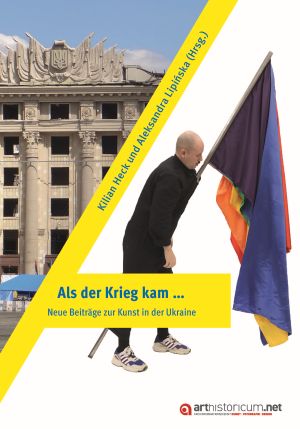
Zitationsvorschlag
Lizenz

Dieses Werk steht unter der Lizenz Creative Commons Namensnennung - Nicht-kommerziell - Keine Bearbeitungen 4.0 International.
Veröffentlicht
Downloads
Als der Krieg kam … / When the war came …
Neue Beiträge zur Kunst in der Ukraine / New studies into art in Ukraine
Der Band umfasst sieben Beiträge des Ukraineforums, das kurzfristig als Reaktion auf den russischen Angriffskrieg im Rahmen des 36. Deutschen Kunsthistorikertages in Stuttgart am 24.–25. März 2022 veranstaltet wurde. Die methodologisch unterschiedlich profilierten Artikel der Autor:innen aus der Ukraine, Polen und Deutschland befassen sich mit den ausgewählten Aspekten der Architektur und der Bildkünste in der Ukraine vom 19. Jahrhundert bis in die Gegenwart. Sie alle verbindet, dass sie sich auf unterschiedliche Art und Weise mit dem Thema Krieg und seinen Auswirkungen auf die Kunst und Kultur der Ukraine auseinandersetzen. Zugleich erforschen die Beiträge nicht nur das reichhaltige Kulturerbe der Ukraine, sondern versuchen dieses auch außerhalb des Landes bekannter zu machen.






